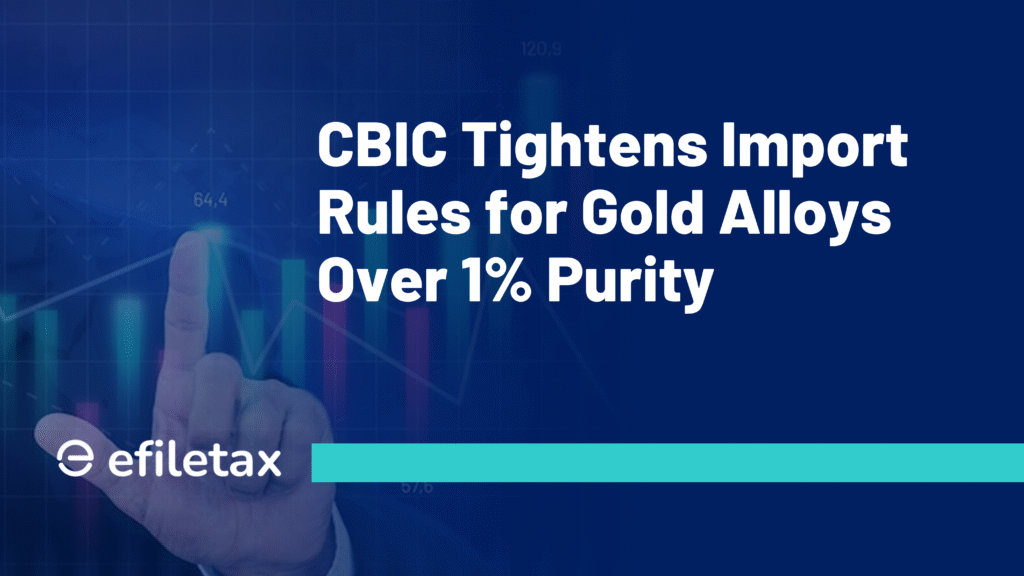
Import Policy for Precious Metal Alloys Key CBIC Update
The import policy for precious metal alloys containing more than 1% gold has been clarified by CBIC through an official Trade Notice, aligning customs procedures with DGFT’s Import Policy under Chapter 71 of the ITC (HS) classification.
This update is crucial for jewellers, bullion traders, and importers dealing in semi-processed gold alloys.
Why This CBIC Clarification Matters
India is the world’s second-largest gold consumer. To curb misuse of duty exemptions and illegal imports, the CBIC and DGFT regularly tighten norms for gold and precious metal imports.
The latest CBIC instructions ensure that customs clearances match the DGFT’s restricted import policy for:
- Precious metal alloys with gold content over 1% by weight
- Semi-manufactured gold-based alloys and intermediates under Chapter 71
Key Conditions for Importers
As per CBIC’s Trade Notice and DGFT’s updated policy:
Restricted Category:
Imports require a valid DGFT import license under the Restricted category.
Proper Classification:
Declare accurate HS Codes under Chapter 71.
Jeweller Registration:
Importers must be registered with BIS if applicable and comply with hallmarking norms where relevant.
Consignment Checks:
Customs will conduct rigorous checks to confirm purity and alloy composition.
Related Notifications & References
- DGFT Policy Circular No. 38/2023-24
- CBIC Trade Notice issued June 2025
- ITC (HS) Classification under Chapter 71 DGFT Official Portal
Expert Tip: Avoid Classification Errors
Many importers misclassify gold alloys as ‘waste and scrap’ to evade higher duties. This invites penalties and seizure under the Customs Act, 1962. Always verify with a certified assayer and declare correct purity to avoid compliance risks.
Quick Comparison: Gold Alloy vs Gold Scrap
| Aspect | Gold Alloy (>1% gold) | Gold Waste/Scrap |
|---|---|---|
| Purity | Typically refined alloy | Unrefined, mixed waste |
| Import Policy | Restricted, license mandatory | Permitted under specific waste codes |
| Duty | Higher due to gold content | Lower if proven as scrap |
| Risk | High if misdeclared | High if misused for duty evasion |
FAQs: Import Policy for Precious Metal Alloys
Q1. Is a license mandatory for all gold alloys?
Yes. Alloys with over 1% gold content fall under the Restricted category; a valid DGFT license is required.
Q2. Can I import gold scrap under alloy codes?
No. Misclassification is a punishable offence. Scrap must comply with its specific waste codes.
Q3. Does BIS hallmarking apply to alloys?
BIS registration may apply depending on final use — check with your customs broker.
Summary Snippet (40-50 words)
The CBIC has reinforced that importing precious metal alloys with more than 1% gold needs a valid DGFT license under the Restricted category. Traders must ensure correct classification under Chapter 71 to avoid penalties and confiscation.
Stay Compliant with Efiletax
Need help decoding DGFT and CBIC notifications for your gold imports? Connect with Efiletax experts for smooth licensing, documentation, and compliance support.
👉 Explore Efiletax Import Compliance Services
Internal Link Suggestion:
You may link the phrase “gold imports” to your earlier blog on “Gold Import Duty and Compliance Norms for 2025” if available.